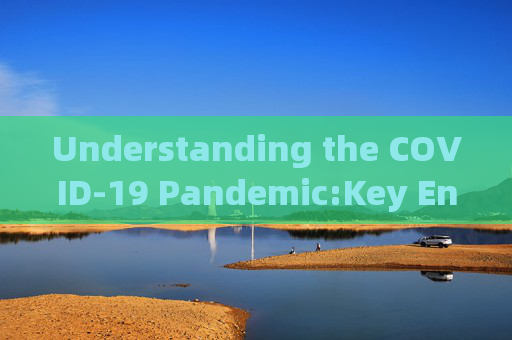The COVID-19 pandemic has been a global health crisis that has affected every aspect of our lives. As the world grapples with the virus, it's essential to understand the key English expressions and terminology related to the pandemic. This article aims to provide a comprehensive guide to the language used in discussing COVID-19, from its origins to its impact on society.
Origins and Virus Terminology
- Coronavirus (COVID-19): The name given to the virus responsible for the disease, which is a member of the coronavirus family. The "CO" stands for corona, "VI" for virus, and "D" for disease. The number 19 indicates the year of its discovery.
- SARS-CoV-2: The scientific name for the virus that causes COVID-19. "SARS" stands for Severe Acute Respiratory Syndrome, and "CoV-2" indicates it's the second coronavirus to cause a major outbreak after SARS.
- Novel Coronavirus: A term used early in the pandemic to describe the new strain of coronavirus that had not been previously identified in humans.
Transmission and Infection
- Asymmetric Transmission: A term used to describe how some individuals are more likely to spread the virus than others, often referred to as "super-spreaders."
- Asymptomatic Carriers: Individuals who carry the virus but do not show any symptoms.
- Community Transmission: The spread of the virus within a community where the source of infection is unknown.
- Droplet Transmission: The primary mode of transmission for COVID-19, where the virus spreads through respiratory droplets produced when an infected person coughs, sneezes, or talks.
Symptoms and Health Impacts
- Flu-Like Symptoms: Symptoms similar to those of the flu, including fever, cough, and body aches, which are common in COVID-19.
- Pneumonia: A severe complication of COVID-19 where the lungs become inflamed and filled with fluid, making it difficult to breathe.
- Acute Respiratory Distress Syndrome (ARDS): A life-threatening condition characterized by rapid onset of widespread inflammation in the lungs, leading to severe difficulty in breathing.
- Long COVID: A term used to describe the long-term effects of COVID-19, where symptoms persist for weeks or months after the initial infection.
Prevention and Hygiene
- Social Distancing: The practice of maintaining a safe distance from others to prevent the spread of the virus.
- Personal Protective Equipment (PPE): Equipment used to protect individuals from being exposed to the virus, including masks, gloves, and gowns.
- Hand Hygiene: The practice of washing hands regularly with soap and water or using hand sanitizer to reduce the spread of the virus.
- Surface Disinfection: The process of cleaning and disinfecting surfaces that may be contaminated with the virus.
Testing and Diagnosis
- PCR Test: The Polymerase Chain Reaction test, a diagnostic test that detects the presence of the virus's genetic material.
- Antig2025年新奥开奖结果en Test: A type of test that detects specific proteins on the surface of the virus.
- Serology Test: A test that looks for antibodies, indicating whether a person has had a previous infection.
- False Negative/Positive: Results that indicate the absence/presence of the virus when it is actually present/absent.
Vaccination and Immunity
- Vaccine: A substance that stimulates the body's immune system to produce a defense against a specific disease, in this case, COVID-19.
- Vaccination Campaign: A coordinated effort to administer vaccines to a large population to achieve herd immunity.
- Booster Shot: An additional dose of a vaccine given to increase immunity against the virus.
- Immunity Passports: Documents that indicate an individual has immunity to the virus, either through vaccination or previous infection.
Public Health Measures and Policies
- Lockdown: A strict restriction on movement and social interaction to control the spread of the virus.
- Quarantine: The period of time a person is isolated to see if they develop symptoms after potential exposure to the virus.
- Contact Tracing: The process of identifying and notifying individuals who have been in contact with someone infected with the virus.
- Non-Pharmaceutical Interventions (NPIs): Public health measures, such as social distancing and mask-wearing, that do not involve the use of medication or vaccines.
Economic and Social Impacts
- Economic Downturn: A period of negative economic growth, often resulting from the pandemic's effects on businesses and employment.
- Remote Work: The practice of working from home or a location other than the traditional workplace, which has become more common due to the pandemic.
- Mental Health Crisis: The increase in mental health issues, such as anxiety and depression, due to the stress and isolation caused by the pandemic.
- Supply Chain Disruptions: The interruption of the flow of goods and services, often due to lockdowns and other pandemic-related restrictions.
Global Cooperation and Response
- Pandemic Preparedness: The planning and actions taken to prepare for and respond to a pandemic.
- Global Health Security: The measures taken by countries to protect their populations from global health threats, including pandemics.
- Solidarity and Collaboration: The cooperation between nations to share resources, information, and expertise in the fight against the pandemic.
- Vaccine Inequity: The unequal distribution of vaccines, where some countries have access to more doses than others.
Understanding these key English expressions and terminology is crucial for anyone seeking to stay informed about the COVID-19 pandemic. As the situation continues to evolve, it's important to keep up-to-date with the latest developments and to use accurate language when discussing the virus and its effects. By doing so, we can contribute to a more informed and effective global response to this unprecedented health crisis.














 豫ICP备20000281号-1
豫ICP备20000281号-1
还没有评论,来说两句吧...